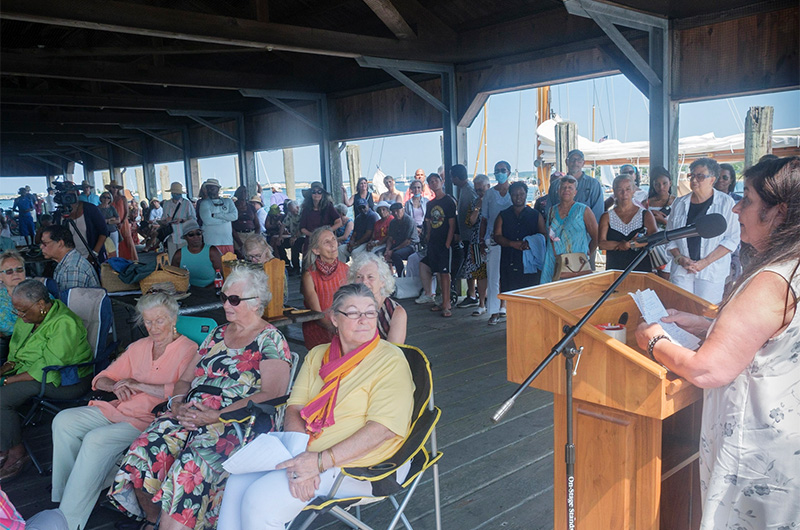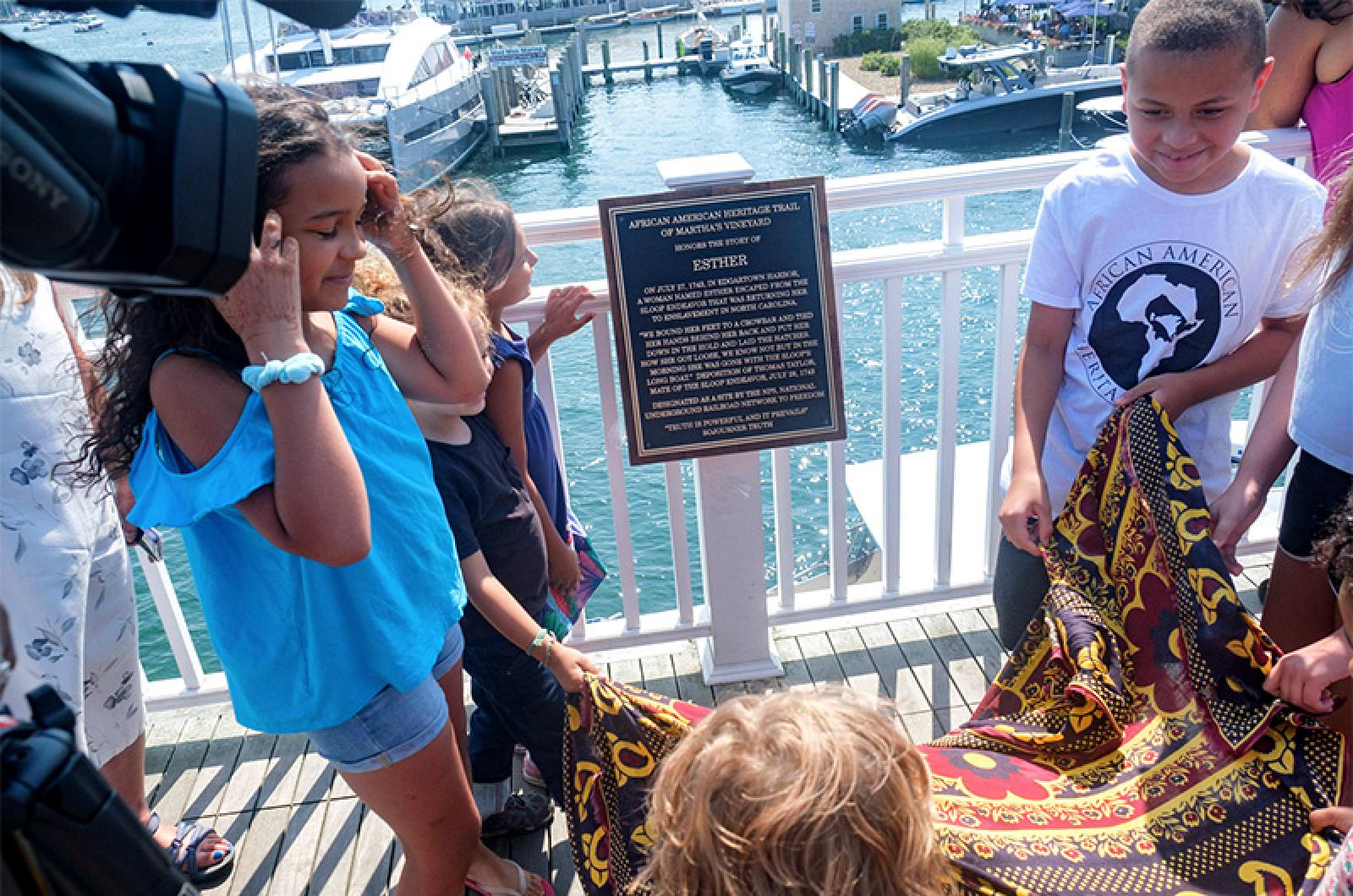With a public ceremony Tuesday at Edgartown’s Memorial Wharf, the African American Heritage Trail of Martha’s Vineyard dedicated a new site commemorating the still-mysterious escape of a fugitive from slavery 277 years ago.
Bound hand and foot with rope and iron, stuffed like a bundle of goods into the hold of the sloop Endeavor, the prisoner known to her captors only as “a certain Indian woman, named Esther” disappeared as their boat lay in Edgartown Harbor on the night of July 27, 1743.
“She got away, and they never found where she went,” said African American Heritage Trail co-founder Elaine Cawley Weintraub, in remarks to the more than 100 people who gathered for Tuesday’s ceremony.
The National Underground Railroad Network to Freedom, a program of the National Parks Service, added Edgartown Harbor and Esther’s story earlier this year — the first site on Martha’s Vineyard to be so designated, Ms. Weintraub told the applauding Memorial Wharf crowd.

Now, a plaque on the upper level of the wharf tells what little is known about Esther and her break for freedom.
Considered the fugitive property of a North Carolina man, she had made it as far as Boston before she was captured and jailed until the Endeavor could take her south. But in the shipping hub of Edgartown, she disappeared — and entered history.
In a deposition, reprinted by the Vineyard Gazette in 1854, the Endeavor’s baffled crew swore that they had secured their prisoner carefully after they arrived in the busy harbor.
“(I)n the evening, we bound her feet to a crowbar, and tied her hands behind her, and put her down into the hold, and laid the hatches. How she got loose we know not; but, in the morning, she was gone, with the sloop’s long boat,” they testified.
Tuesday’s dedication marked the 277th anniversary of Esther’s arrival in Edgartown with speeches, poetry and music.
“This is a dream come true, to have Esther’s story told...where it unfolded,” Ms. Weintraub said.
After a blessing by Rev. Deborah Finley-Jackson, who is a member of the heritage trail board, Charlena Seymour read her husband Harry Seymour’s poem Esther, Fugitive Slave, ending with a rousing “All aboard.”
Mr. Seymour then shared some thoughts with the attentive audience, to the background sounds of the Chappy Ferry engine and harbor traffic. What, he asked, would visitors from Mars make of America’s evident rift between the races?
“How can this division be explained?” he asked. The answer lies in the context, Mr. Seymour went on. “That’s why it’s so important that history be told, and be told honestly,” he said.
Following Mr. Seymour’s remarks, the 20-member Spirituals Choir led by Jim Thomas performed songs about freedom before Ms. Weintraub invited the crowd to climb the stairs to the wharf’s upper level — children first.
“Future youth council members, for sure,” said NAACP of Martha’s Vineyard president Arthur Hardy-Doubleday, with a wide smile for the excited youngsters who clustered around the veiled plaque. At the word “go,” they tugged at the colorfully printed cloth that covered it — and nothing happened, until a grown-up loosened the knot that had kept the veil in place.
Delighted squeals erupted from the children as the cloth finally came free, and the crowd pressed forward to see the new landmark.
Along with the brief history of Esther’s escape, the plaque includes a quotation from Sojourner Truth, the formerly enslaved abolitionist and advocate for women’s rights: “Truth is powerful and it prevails.”
Details about the African American Heritage Trail of Martha’s Vineyard, including sites and tour information, is posted at mvafricanamericanheritagetrail.org.









Comments (1)
Comments
Comment policy »